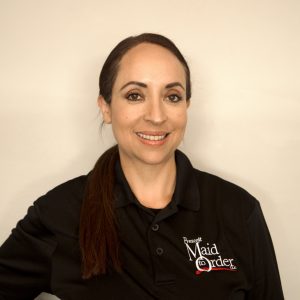Proper interpretation is imperative, as it empowers you to be an equal partner in treatment.
Hearing Thresholds
Hearing thresholds are presented graphically on the audiogram. The x-axis of the graph (left to right) represents frequency. Frequency is interpreted by humans as pitch, with increasing frequency corresponding to increasing pitch. Pitch increases from left to right along the x-axis. Thus, the left half of the audiogram would represent bass, while the right half would be treble. An average exam will test frequencies between 250 and 8,000 Hz. While human hearing can detect frequencies above and below this range, these are the most important for daily communication.
The y-axis (top to bottom) represents intensity as measured in decibels hearing level (dB HL). On this scale, 0 dB HL does not represent the absence of sound, but rather the quietest sound that the average adult can hear. Intensity is interpreted by humans as loudness. A higher decibel level corresponds to a louder sound. Quiet sounds are at the top of the graph, while very loud sounds are at the bottom of the graph.
Your ears function both as combined and independent systems. As such, the audiologist will want to test the respective performance of each ear. The hearing thresholds for the right ear are represented by circles or triangles, while the left ear thresholds are exes or squares. Hearing thresholds are the quietest sound you can hear at a given frequency. For example, the right ear threshold at 1k Hz may be 20 dB HL. This would mean that at that specific frequency, the right ear can hear the sound when it is 20 dB HL or louder, but not below that level. This will hold true for the threshold of each respective frequency. The cut off for normal hearing is 20 dB HL, with 21 dB HL and higher representing increasing degrees of hearing loss.
Speech Understanding
Another main component of a hearing exam is speech testing. Speech test results may be found in numerical form in a box typically located at the bottom of the page. Two main speech tests are typically performed. The first is the speech recognition threshold (SRT). It represents the quietest level at which you can understand speech 50% of the time. The SRT mainly functions as a way to verify accuracy within the test battery. A measurement that is more relevant to daily communication performance is the word recognition score (WRS). Your WRS represents how well your brain can interpret speech sounds and is reported as the percentage of words repeated correctly. When measuring the WRS, the words are presented at a loudness level that is easy for the patient to hear. A high WRS means you can understand words well, while a lower WRS means that the brain has difficulty interpreting the speech sound because of distortion in the auditory system.
Relationship Between Thresholds and Speech Understanding
One important concept to understand is that your hearing thresholds and ability to understand speech are not necessarily correlated. Better hearing thresholds do not always mean a better WRS; nor do worse thresholds always mean a worse WRS. Indeed, two individuals may have the exact same hearing thresholds, yet drastically different abilities to understand what is being said. So what influences your WRS? It all has to do with the frequency filters in your ears. Each speech sound has a different fundamental frequency. Sounds like “shh” have a higher frequency than “oo” would. When sound is picked up by your ears, it is sent through specially designed filters to help separate out all the speech sounds. As more damage occurs to the auditory system, those filters become less precise and overlap with each other. Thus, “shh” and “oo” may appear to your brain to be coming from the same filter and it has difficulty distinguishing them.
While many factors are taken into account when deciding treatment, test results are a main one. By possessing a greater understanding of your results, you can feel confident in the decisions being made. QCBN
By Jeff Lane, Au.D.
Trinity Hearing Center is located at 1330 N. Rim Dr., Suite B in Flagstaff. For more information, visit the website at TrinityHearing.net. Jeff Lane is a doctor of audiology with a passion for improving the lives of others. Dr. Lane may be reached at 928-522-0500 or at audio@trinityhearing.net.














